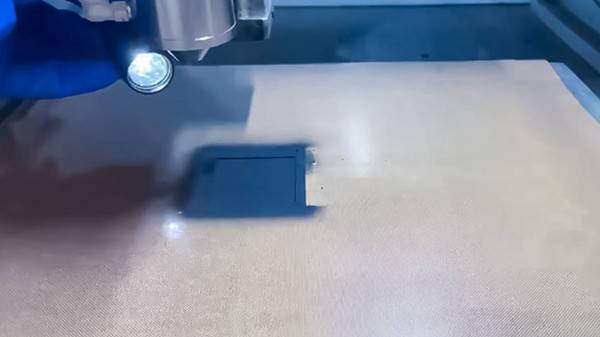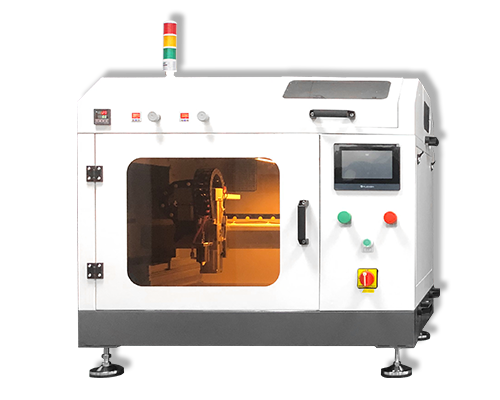Mechanism of Electrolytic Water AEM
The mechanism of electrolytic water anion exchange membrane (AEM) involves many aspects of principles and processes, which are introduced in detail below:
1. Basic structure and characteristics of AEM
- Chemical structure: Anion exchange membrane is usually a polymer membrane material, whose molecular structure contains fixed cationic groups (such as quaternary ammonium salt groups, etc.) and mobile anions (usually hydroxide ions OH⁻ can be conducted in the membrane). These fixed cationic groups are connected to the polymer backbone by chemical bonds to form ion exchange sites, while mobile anions can migrate between these sites under the action of electric field to realize ion conduction function.
- Ion selectivity: One of its most critical characteristics is that it has selective permeability to anions (especially hydroxide ions OH⁻). This is because there is an electrostatic interaction between the fixed cationic groups in the membrane and the hydroxide ions, which allows the hydroxide ions to move smoothly in the membrane, while repelling other cations (such as sodium ions Na⁺, potassium ions K⁺, etc.), and also restricting the passage of other anions (such as chloride ions Cl⁻, if they exist), ensuring that only hydroxide ions can participate in the ion transport process during the electrolysis reaction.
- Physical and chemical stability: AEM needs to remain stable in the specific chemical environment of water electrolysis (generally an alkaline environment). On the one hand, it must have good chemical stability and will not decompose, dissolve or change its chemical structure due to long-term contact with electrolytes (such as potassium hydroxide KOH solution, etc.); on the other hand, it must have sufficient mechanical strength and dimensional stability, and will not be damaged or deformed during installation and operation in the electrolytic cell (which may be affected by electrolyte flow impact, electrode extrusion, etc.), so as to ensure that the electrolysis process is carried out continuously and stably.
2. Electrode reaction and AEM mechanism in the process of water electrolysis
- Reaction mechanism in the cathode area:
– Initial state and water reduction: Near the cathode (the electrode connected to the negative pole of the power supply), water (H₂O) molecules in the electrolyte gather on the cathode surface under the action of the electric field. Since the cathode provides electrons, water undergoes a reduction reaction here. The specific reaction formula is: 2H₂O + 2e⁻ → H₂↑ + 2OH⁻. That is, after the water molecules obtain electrons, they decompose to generate hydrogen (H₂) and hydroxide ions (OH⁻). The generated hydrogen escapes from the cathode in the form of gas and becomes one of the products of hydrogen production by water electrolysis.
– Association between hydroxide ions and AEM: These newly generated hydroxide ions (OH⁻) now become the key “roles” of subsequent ion conduction. Driven by the electric field, some hydroxide ions will move toward the anion exchange membrane (AEM) because AEM has an attractive effect on them (based on the electrostatic effect between the fixed cationic groups in the membrane and the hydroxide ions), and they are ready to migrate to the anode area through AEM to maintain the charge balance of the entire electrolysis system and the continuous reaction. - Anode area reaction mechanism:
– Hydroxyl ion migration and anode reaction: Hydroxyl ions (OH⁻) that migrate from the cathode side through AEM will lose electrons on the anode surface after reaching the anode (the electrode connected to the positive pole of the power supply) area. The reaction formula is: 4OH⁻ – 4e⁻ → O₂↑ + 2H₂O. That is, after the hydroxide ions lose electrons, they generate oxygen (O₂) and water (H₂O). The generated oxygen escapes from the anode in the form of gas and becomes another important product produced by water electrolysis, while the newly generated water is added to the electrolyte on the anode side to participate in subsequent ion conduction and other cycle processes.
– The role of AEM in the exchange of ions between the cathode and anode: The anion exchange membrane acts like an “ion channel” in the whole process, strictly controlling the direction and type of ion exchange, allowing only hydroxide ions to be transmitted from the cathode side to the anode side in a directional manner, preventing the oxygen generated by the anode from diffusing back to the cathode area and mixing with hydrogen (if mixed, there may be safety hazards such as explosion), and also preventing other ions in the electrolyte from participating in the electrode reaction in an disordered manner, thereby ensuring that the electrolysis reaction can proceed in an orderly manner according to the established and efficient path, and realizing the stable decomposition of water into hydrogen and oxygen under power conditions.
3. Factors affecting the mechanism and efficiency of AEM electrolysis of water
- AEM’s own performance factors:
– Ionic conductivity: The ionic conductivity of the membrane directly affects the migration speed of hydroxide ions in the membrane, and thus affects the reaction rate and overall efficiency of electrolysis of water. Higher ionic conductivity means that hydroxide ions can be transferred between the cathode and anode more quickly, allowing the electrode reaction to continue more efficiently, and more hydrogen and oxygen can be produced per unit time. At present, developing AEM materials with higher ion conductivity is one of the key directions to improve the efficiency of water electrolysis.
– Membrane thickness: Generally speaking, thinner membranes can theoretically make the path of ion migration shorter, which is conducive to accelerating ion conduction and improving electrolysis efficiency. However, if the membrane is too thin, it may lead to problems such as insufficient mechanical strength and gas permeation. Therefore, it is necessary to optimize the thickness of the membrane and find a balance point to improve the electrolysis efficiency while ensuring that the membrane has sufficient mechanical properties and gas barrier capacity. - Electrolyte-related factors:
– Electrolyte concentration: In the AEM water electrolysis system, commonly used electrolytes such as potassium hydroxide (KOH) solution have different concentration options. The appropriate electrolyte concentration can affect the concentration gradient of ions and the conductivity of the solution. Properly increasing the electrolyte concentration can increase the number of hydroxide ions, which is beneficial to increase the rate of their migration to the anode through the AEM to a certain extent, but too high a concentration may also bring problems such as increased corrosion and decreased membrane performance, which need to be reasonably regulated.
– Electrolyte temperature: Increased temperature usually makes the thermal motion of ions more intense, thereby accelerating the migration speed of hydroxide ions in the electrolyte and AEM, promoting the electrolysis reaction, and improving the efficiency of hydrogen production. However, too high a temperature will also have an adverse effect on the chemical stability of AEM, the durability of electrode materials, etc., so it is also necessary to select a suitable operating temperature based on the specific AEM materials and electrolysis system characteristics. - Electrode material and reaction condition factors:
– Electrode material catalytic activity: The catalytic activity of the electrode is crucial to the electrolysis reaction. In the AEM water electrolysis system, suitable electrode materials (including cathode and anode materials) can reduce the overpotential of the reaction, make the water decomposition reaction more likely to occur, promote the process of hydroxide ions gaining and losing electrons on the electrode surface, and thus improve the efficiency of the entire water electrolysis. For example, some non-precious metal composite electrode materials are being developed in order to reduce costs while improving catalytic activity.
– Current density: Current density reflects the current passing through a unit electrode area. Properly increasing the current density can speed up the reaction rate of water electrolysis and make the generation rate of hydrogen and oxygen faster, but too high current density may lead to aggravated electrode polarization and increased overpotential, which not only reduces energy efficiency but also may affect the service life of electrodes and AEM. Therefore, it is necessary to reasonably control the current density.
In summary, the AEM mechanism of water electrolysis is a complex but orderly electrochemical process. Through the unique ion conduction function of anion exchange membrane and the coordinated cooperation with electrode reaction, water can be efficiently electrolyzed to produce hydrogen and oxygen under appropriate conditions. Its performance and efficiency are affected by multiple factors. These factors need to be comprehensively considered in research and application to continuously optimize this technology.
Hydrogen production by electrolysis of water is the most advantageous method for producing hydrogen. Utrasonic coating systems are ideal for spraying carbon-based catalyst inks onto electrolyte membranes used for hydrogen generation. This technology can improve the stability and conversion efficiency of the diaphragm in the electrolytic water hydrogen production device. Cheersonic has extensive expertise coating proton exchange membrane electrolyzers, creating uniform, effective coatings possible for electrolysis applications.
Cheersonic ultrasonic coating systems are used in a number of electrolysis coating applications. The high uniformity of catalyst layers and even dispersion of suspended particles results in very high efficiency electrolyzer coatings, either single or double sided.
About Cheersonic
Cheersonic is the leading developer and manufacturer of ultrasonic coating systems for applying precise, thin film coatings to protect, strengthen or smooth surfaces on parts and components for the microelectronics/electronics, alternative energy, medical and industrial markets, including specialized glass applications in construction and automotive.
Our coating solutions are environmentally-friendly, efficient and highly reliable, and enable dramatic reductions in overspray, savings in raw material, water and energy usage and provide improved process repeatability, transfer efficiency, high uniformity and reduced emissions.
Chinese Website: Cheersonic Provides Professional Coating Solutions



